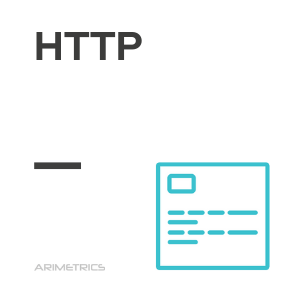
Definition:
HTTP is short for “hypertext transfer protocol”, an underlying protocol used by the World Wide Web. HTTP defines how messages are formed and transmitted and what actions web servers and browsers should take in response to various commands.
Examples of HTTP
When a URL is entered into the browser, the browser sends an HTTP request to the corresponding web server, asking it to locate and deliver the requested web page. The server responds with the content of the page, which may include text, images, videos and other multimedia elements. This exchange of requests and responses is what enables Internet browsing. In addition to HTTP, HTML (Hypertext Markup Language) is fundamental to the web, as it defines the structure and format of web pages, facilitating their correct display in browsers.
HTTP: A Stateless Protocol
A distinguishing feature of HTTP is that it is a stateless protocol. This means that each request from the client to the server is handled independently, without retaining information about previous requests. This independence simplifies the design of the protocol, but it also presents challenges for creating interactive web applications that require remembering user state, such as login sessions or shopping carts. To overcome these limitations, complementary technologies such as ActiveX, Java, JavaScript and cookies have been developed. These tools allow developers to create more dynamic and personalized web applications, maintaining user information between different interactions with the website.
Evolution and enhancements of HTTP
Over time, HTTP has evolved to meet the increasing demands of the modern web. HTTP/1.1 introduced significant improvements in data transmission efficiency, such as connection reuse and support for multiple simultaneous requests. More recently, HTTP/2 and HTTP/3 have brought new optimizations, such as header compression, request multiplexing, and the use of faster and more secure transport protocols, such as QUIC for HTTP/3. These improvements have resulted in faster load times and a smoother user experience on the web.
Advantages of HTTP
HTTP offers several advantages that have contributed to its widespread adoption as the primary protocol of the web. These advantages have established it as a fundamental component in the operation and continued development of the Internet.
- Simplicity and ease of implementation: HTTP is a relatively simple protocol, which facilitates its implementation and adoption by developers and service providers.
- Platform independence: HTTP is compatible with any operating system and device that has a web browser or web server, making it highly accessible.
- Extensibility: HTTP’s ability to evolve and adapt to new needs, as seen with HTTP/2 and HTTP/3 versions, demonstrates its flexibility.
- Interoperability: As a widely accepted standard, HTTP ensures that browsers and servers from different vendors can communicate seamlessly.
- Multimedia support: HTTP allows the transfer of various types of content, such as text, images and videos, making it ideal for the multimedia experience of the modern web.
- Stateless protocol: Although it presents certain challenges, the stateless nature of HTTP simplifies connection management and reduces the load on servers.
- Enhanced security with HTTPS: Although HTTP itself is not secure, its HTTPS variant uses SSL/TLS encryption to protect communication, ensuring data privacy and security.
- Caching support: HTTP allows caching of web resources, which improves load times and optimizes bandwidth usage on subsequent visits.
